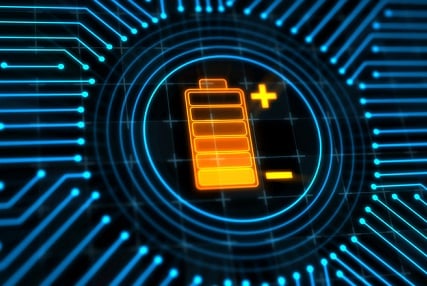Is your school using the most efficient batteries?

As the market for portable devices in schools continues to expand, battery technology has similarly evolved to meet demand.
For principals to understand the implications, it is worth taking a look at a few different battery types to recognise both their advantages and disadvantages:
Conventional lead-acid batteries are cost effective, have a long life, have no memory effect, and experience low levels of self-discharge.
However, they also have a very slow charge time – typically eight to 16 hours – have a low energy density of 30 Wh/kg (Watt hours per kilogram) and are environmentally unfriendly to produce.
Likewise, Nickel Cadmium (NiCd) batteries provide a low-cost option, and are popular for their increased energy density of 40-60 Wh/kg and their fast charge time of two hours or less if undertaken with care.
On the downside, they only have a medium lifespan, experience high levels of self-discharge, suffer from memory effect—and therefore need to be fully discharged before recharging—and are also environmentally unfriendly to manufacture.
Moving up the cost scales, Nickel Metal Hydride (NiMH) batteries are still a reasonably low-cost option, but are more expensive than Lead Acid or NiCd. NiMH batteries are less prone to the memory effect than NiCd, have a higher energy density of 60-80 Wh/kg and are considered environmentally friendly.
Unfortunately, these only have a medium lifespan, are slow to recharge, suffer high self-discharge rates and also need to be fully discharged before recharging to get the best performance out of the battery.
High energy density
Lithium Ion (Li-Ion) batteries, such as those made from Lithium Iron Phosphate (LiFePO4), have historically been more expensive still, but benefit from a long lifespan, a very high energy density – as high as 130Wh/kg, thus presenting a very compact energy source – and demonstrate low levels of self-discharge.
Furthermore, LiFePO4 batteries boast inherent circuit protection, are less prone to memory effect, and are environmentally friendly to produce.
The increasingly prevalent use of Li-Ion—especially LiFePO4—across such a wide array of devices means that this is arguably one of the fastest developing segments of the battery industry, and one where the most improvements are being made, both to enhance performance and minimise maintenance.
Technology of choice
Added to this are the environmental aspects of production: a consideration that is rightly taking a greater precedence in consumer choice today than at any time previously, and which will only become more important still as we move into the future.
Lead Acid and NiCd battery production results in the production of toxic metal contaminants, whereas Li-Ion can be manufactured with no comparable toxic emissions.
A few short years ago, it would have been unthinkable to utilise Li-Ion batteries for an application like emergency lighting. However, recognising the many advantages this solution has to offer,
Legrand is implementing such a move. Compared with NiCd, LiFePO4 batteries are more stable, have a considerably longer lifespan and are 70 per cent lighter for the same power output, resulting in reduced maintenance costs.
How Legrand is powering ahead
As renowned trendsetters in technology innovation and unique product design, Legrand has developed LIION: a Li-Ion range of emergency lighting.
This new collection incorporates iSmartTM temperature-sensing technology, to ensure that the ambient temperature of each luminaire is within tolerance of the battery specification prior to charging the battery. Legrand is so confident in this technology that it is offering a five-year warranty to its customers.
LiFePO4 offers an exciting future for many applications like emergency lighting, where older battery technologies have conventionally been used.
For applications like emergency lighting solutions, these benefits mean that LiFePO4 is the battery technology of choice for the future.
Take a look at Legrand’s LIION brochure to find out more about why they’re turning heads. www.legrand.com.au


